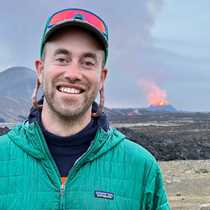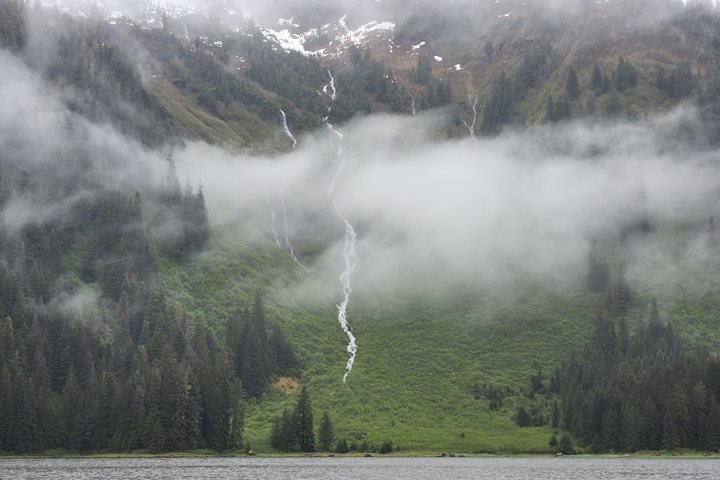I would “Venture” to say that days like today explain why words like “awesome,” “glorious,” and “exceptional” were invented. Glacier Bay National Park is one of our planet’s most inspiring amphitheaters of creation—but it doesn’t give itself away easily. The towering coastal range that abuts the tempestuous Pacific is often shrouded in dreary, low-lying, moisture-ridden clouds that mask the grandeur of the scenery for much of the year, such that postcards featuring the scenery seem like little more than marketing lies made to lure gullible travelers into a soggy bay to test the resolve of their outerwear.
But not today. Bright and early, we were greeted by soaring views of aptly named Mount Fairweather, bluebird skies, and crisp, clear air stretching as far as the eye could see. Sea otters and lions, jaegers, murrelets, harbor porpoises, and loons flanked us as we approached the isostatically-rebounded lowlands of Bartlett Cove and its visitor center. We disembarked shortly after breakfast to explore the natural science experiment of forest succession that makes Glacier Bay such a living laboratory for understanding our planet’s biological reaction to glaciation. We were transported to another world outside of time by the early morning light streaming through moss- and lichen-covered spruces and hemlocks, the freshly sprouting ferns and budding Vaccinium bushes, chirping juncos, sapsuckers, and robins, and the mirrorlike kettle ponds with rippling river otters. The landscape is one of boisterous life freshly salvaged from its recent icy exfoliation.
We wrapped up our time onshore by visiting the Tlingit Haida tribal house, a monument to the resilience of the people who have lived here since time immemorial to outlast the advancing glacier that pushed them from their homeland centuries ago. The white bureaucracy would have seen them permanently erased from this integrally human/nature landscape in the name of a human-less “wilderness” that never existed and needn’t be catered to. What a treat it is to visit this storied bay in the decade that saw the return of its historic caretakers!
We returned to the ship and set sail into the 60-mile-long fjord, exploring various hot spots along the way. South Marble Island greeted us after lunch with a magnificent showing of humpback whales, Steller sea lions, tufted puffins, and assorted alcids, sea otters, and wondrous views of the Fairweathers in the background. Gloomy Knob presented itself with some of the most photogenic mountain goats most of us had ever witnessed (with more puffins and whales to boot) and a multitude of brown bear sightings along the shore of Tarr Inlet on our way to the modern terminus of the glaciers that carved this exquisite fjord. We arrived at the tidewater glaciers of Margerie, Ferris, and Grand Pacific just in time for cocktail hour, where we watched a few calving events among the numerous kittiwakes, harbor seals, and Arctic terns enjoying the chilly cul-de-sac with us all. As I type, the alpenglow is shining pink in the snow-capped hills as we sail out back toward Icy Strait and the nearby Inian Islands—what sweet dreams we will have tonight and what adventures lie ahead here in the magic of Southeast Alaska!







